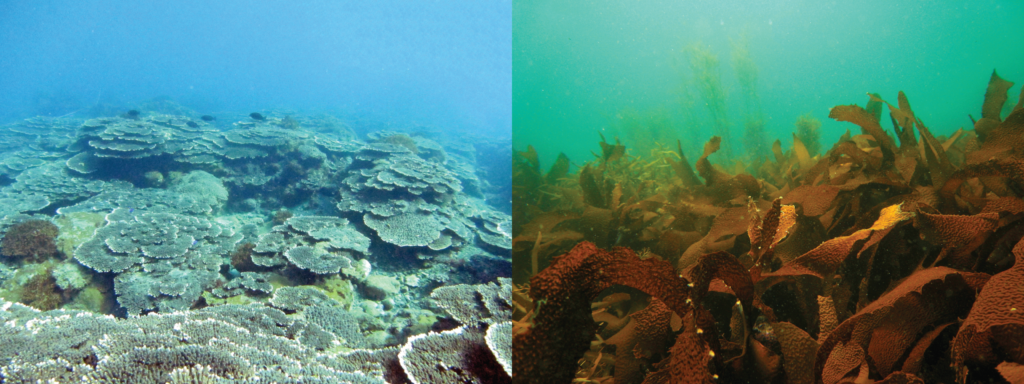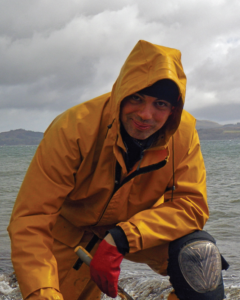Spotlight on Research: Exploring the ecological effects of climate change
Research Highlight | March 19, 2018
Say it’s summertime, comfortably warm, and we are seated next to a window under the sun’s rays. If it were too become a bit too hot, we may decide to stay in the same position but do something to improve the conditions: close the window blinds or turn on the air conditioner for example. Now, if the heat were too extreme, we would probably opt for moving to a different location. This analogy can be applied to all living organisms.
Physiology shows us that every species can live within a certain range of environmental conditions. They perform their best within an optimal range, outside which they begin to have problems. To some extent, species can compensate for these negative effects using adaptive mechanisms such as by modifying their behavior or the timing of biological processes (e.g. earlier blossom of trees). However, if conditions continue to deteriorate, they would eventually reach a point at which they cease to exist at that location. The opposite situation is also possible. A species can colonize previously unsuitable locations that have become suitable. The combination of these opposing processes results in distribution changes that alter biodiversity patterns, species interactions and ultimately the way ecosystems function.
Assistant Professor Jorge García Molinos of Hokkaido University’s Arctic Research Center looks at climate change and other human-caused environmental impacts, as well as how these changes alter biodiversity and ecosystems. An important part of this research is performed via computer-based modeling and simulations using big data; this is complemented with field sampling and experiments. For example, Dr. García Molinos is planning to start utilizing mesocosms, small controlled outdoor chamber experiments, at the university’s Tomakomai Experimental Forest to test the combined effect of climate change and other impacts, such as habitat degradation and pollution, on freshwater streams.
One of Dr. García Molinos’ current projects involves studying the role of management strategies in mitigating the future global impact of climate change on commercial fisheries. As part of an international team of researchers led by Prof. Steven D. Gaines (University of California – Santa Barbara), he simulates scenarios to estimate the extent to which management can compensate for changes in the productivity and geographical distribution of over 900 global stocks. This will provide insight into how we can effectively manage fisheries. For example, movements of fisheries to different locations, specifically when they cross territorial waters, create complications on an international scale, calling for international cooperation and management. Without these, countries from which the stock is disappearing may lean towards overexploitation, while countries which the stock is moving into may not have regulations in place to manage the exploitation of these resources.
“The results are showing that proactive decision making and adaptive management, which takes into consideration the effects of climate change , can lead to overall healthier fisheries than we have today—and that’s good news.” Dr. García Molinos commented.
In another study, Dr. García Molinos zooms in closer to the corals, seaweeds and fish surrounding Japan. Together with colleagues from Hokkaido University and the National Institute of Environmental Studies, they are using historical data sets to study changes in relation to climate change. The purpose is to analyze the role of ocean warming and surface currents in explaining the ongoing expansion of tropical corals into temperate coastal waters where they are progressively outcompeting species of seaweed stressed under the warmer conditions. While the expansion of tropical corals is good news in itself because these species are increasingly at risk from climate change in their home waters, seaweeds are very important resources for food production in Japan, not to mention their role in protecting the coast and regulating CO2 levels.

Warming is facilitating the expansion of tropical corals (left) into temperate coastal waters in Japan, where they are displacing local seaweeds (right), many of which, adapted to colder temperatures, are retreating northwards (Photos: Naoki Kumagai).
Although many of us are aware of climate change and understand that it is a problem, we may not necessarily act like it is a problem in our daily lives. Dr. García Molinos hopes his research can help breach this gap and demonstrate the practical consequences of human-caused environmental impacts to the general public: “If you say a species is going to disappear, unless it’s something emblematic like the panda, many people won’t give it a second thought. But, if you say when this species disappears there will be consequences to our daily life, such as altering our diet, maybe people will start thinking about these problems more carefully.”
Researcher Details:
Assistant Professor Jorge García Molinos
Arctic Research Center
Satellite Observation and Modeling Research Group
jorgemolinos@arc.hokudai.ac.jp
Author: Dr. Katrina-Kay Alaimo

